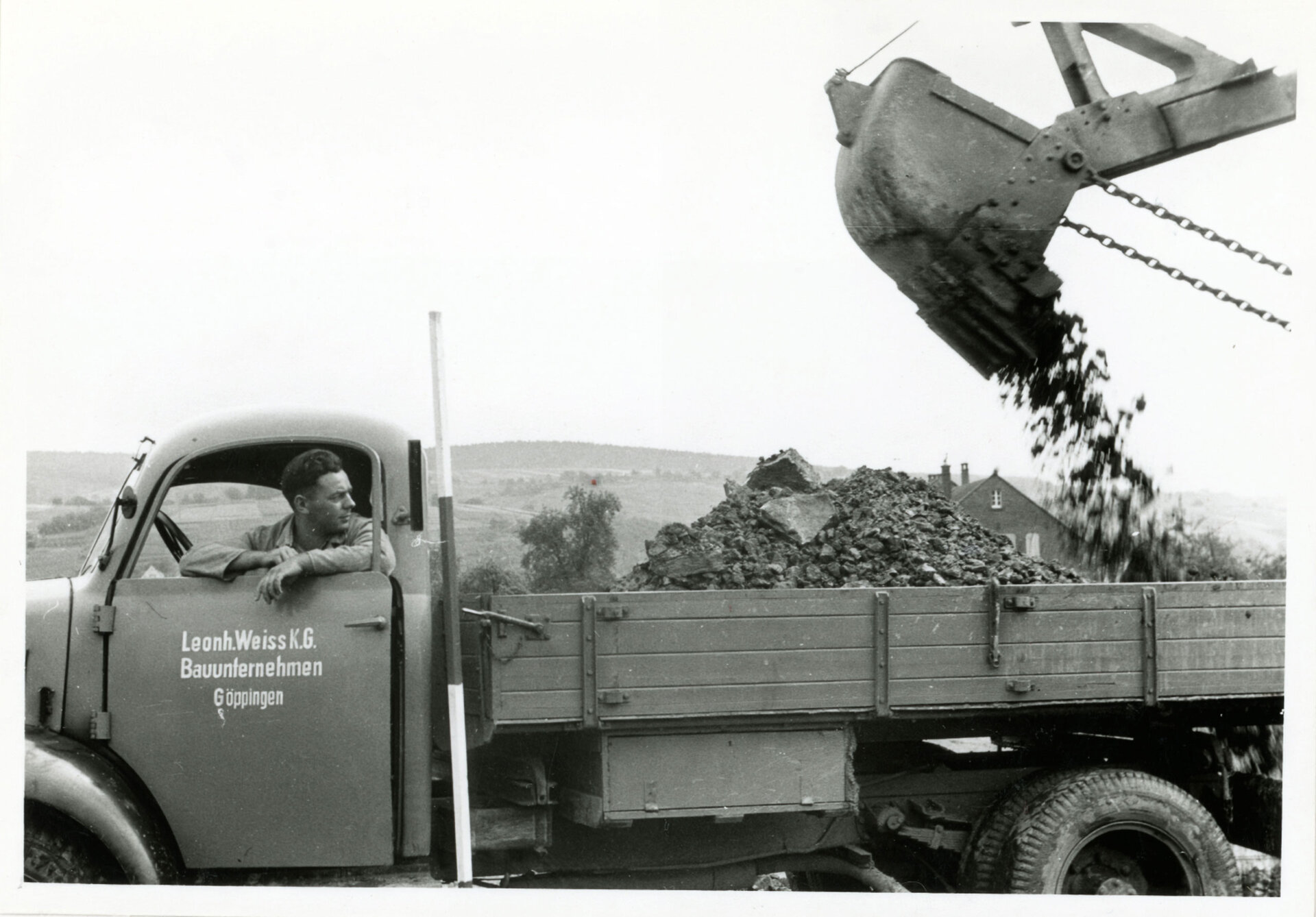Mechanisation after the war.
And then things really get going.
A normal railway construction site for LEONHARD WEISS in the mid-1950s: the men, armed with shovels, work their way through the ballast so that the stones fly around. Once excavated, the rails are loaded by hand and fixed in place with pliers. The tamping of the track is also done by hand: the workers use picks to push the ballast under the tracks and align the whole system. In an eight-hour shift, ten workers cover about 100 meters.
While track-laying trains were already making work easier in other countries such as the USA, large machines were banned in Germany until the end of the 1950s in order to employ as many people as possible. At LEONHARD WEISS, where the first orders from the Reichsbahn Directorate in Stuttgart arrived shortly after the occupation, buses full of young men were brought from the countryside to the construction sites. The first priority was to repair the destroyed infrastructure. Hermann Geiss was one of the men on this bus. He later wrote down his memories of his first assignments in the mid-1950s at LEONHARD WEISS.
The first job in the Göppingen area was to change the rails at Geislingen station. There were also workers from Göppingen who already had a lot of experience in this field. That was important, because most of them had never done track work before. (...) Everything went well! Whenever we talked about it later, we realised that the whole site was one big jumble of people.
Walter Weiss is already making big plans during the machine ban. Having seen the possibilities of modern technology with his own eyes on a trip to the USA in 1954, he is determined to push ahead with mechanisation in his company. From 1957, excavators are permitted. In 1959, LEONHARD WEISS was the first private company in south-west Germany to buy a tamping machine. And the machinery continues to grow - also thanks to the active support of Werner Schmidt senior.
Together with the machine manufacturers, LEONHARD WEISS developed new machines to meet the needs and requirements of track construction sites. For example, the first two-way excavator in 1967, which was the result of cooperation with LIEBHERR. Walter Weiss also purchased several Italian Donelli gantry cranes. With light, flowing movements, these machines carry out what used to be back-breaking work: they lift the old rails out of the bed and take new ones from the transport vehicle Despite his success, Walter Weiss has to fight internal resistance. But when the company started to look at mechanisation, things started to look up. And steeply.
The machines got bigger and bigger and we were practically the number one in the whole of southern Germany. My father still wants the most modern machines.
Thanks to consistent modernisation, LEONHARD WEISS has become one of the leading railway construction companies in Germany. At the same time, the company has expanded into many other areas such as bridge construction, industrial construction and turnkey construction. The bright yellow fleet of machines, which soon included tamping machines, ballast ploughs, sleeper replacement machines and two-way excavators, as well as powerful high-speed conversion trains, became the trademark of LEONHARD WEISS[8].
By the end of the 1980s, the construction company had become a successful full-service provider. Technically demanding track construction still accounts for only 20 per cent of the company's total output, but LEONHARD WEISS has been setting standards in this field with technical innovations since the Second World War.
A completely normal construction site 30 years later
A completely normal construction site 30 years later: like a monstrous yellow caterpillar, the machine slowly but surely works its way over the rails. In front of it are the old tracks, but behind it, where it has eaten its way through, is the brand-new track. The rapid renewal train first pushes the ballast aside, lifts up the old track, stores it, removes the old sleepers and then lays the new track. All fully automatic. Workers in orange protective clothing check that everything is going smoothly. If it is, they can lay up to 3,000 meters in a single shift.
